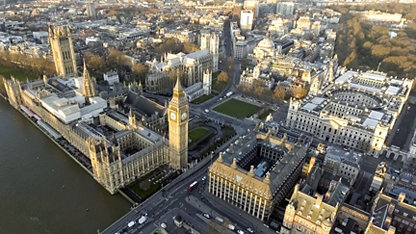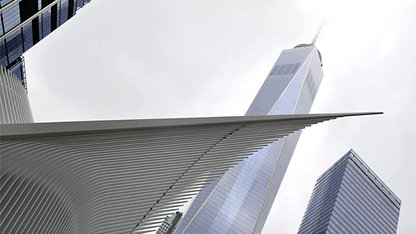The way we build has often had to evolve and adapt at various points. Factors such as the impact of nature, design preferences and availability of materials have meant the construction sector is always developing, striving to provide improved solutions in changing contexts.
With the impact of Covid-19 and the consequences of climate change heavy in public consciousness, it is fair to say that the construction sector is facing a crossroads. The way we build is entering a new phase.
When asked about factors affecting the construction sector at present, RICS Chief Economist Simon Rubinsohn noted a variety of challenges:
"The key challenge for the construction sector globally is around shortages of building materials but finding labour with the requisite skills is also proving a growing problem," said Rubinsohn.
“The rebound in the industry from the pandemic has been exacerbated by the focus governments are placing on infrastructure programmes to drive the wider macro recovery. Ultra low interest rates are also pushing up housing demand and encouraging developers to upscale their plans. ”
These factors are causing a spotlight to be cast upon the construction sector. Although it is a period of uncertainty, it is also one for growth and opportunity.
The impact of Covid-19
The arrival of Covid-19 has also contributed to a tide of change. Pre-2020, supply chains were established and there were no foreseeable interruptions to construction projects. Global transport systems could be relied upon, material prices were more stable and workforces didn't face sudden, unpredictable shortages. This changed when the pandemic took hold.
Ann Bentley, Global Board Director of Rider Levett Bucknall says: "The biggest challenge and opportunities that the sector faces at the moment are the balance between short-term imperatives, such as labour and material shortages, inflation, pressure on the public sector budgets and the political realities of the post-covid world, with the long-term aspirations of using construction as a vehicle for social and environmental change"
The collective impact of these things has led to growing discussion about the future of the sector and the direction it should take. With so many influences on what we build, how we build and what materials are used to build colliding simultaneously there is an urgent need for the construction sector to adapt.
Continuing, Ann succinctly summarised the crossroads the construction sector is at:
“Get it right and we could see a transformation in the way that projects are created, designed and delivered and their lifetime performance. Get it wrong and we will have missed a once in a generation opportunity to improve the built environment, society and the environment. ”
What could this look like in practice?
A consequence to major disruptions in the industry is that various ways of working and concepts have emerged. Within the past 18 months the construction sector has seen a spotlight on procuring for value, sustainability in terms of materials and developments and a move toward digitisation. Changes to the construction process, the supply chain and evolving standards have influenced the change in trends but a move toward evolved ways of working was already developing before this.
In north-west China, a new model of architecture is being developed. Glodon Xi'an R & D Centre is using the latest technology to create a sustainable building that is designed for the modern age in both infrastructure and functionality. The building covers over 60,000 square metres and is expected to be in use by the end of 2021.
Using design, transaction, construction and O&M software, technologies are fully applied to the digitalisation and networking of the entire construction process for all elements and stakeholders. It optimises the conditions for a healthy environment through analysis of sunshine, ventilation and noise. These in turn lead to better health and workspaces.
It is doing this by analysing building energy consumption and CO2 emissions to reduce total energy consumption and CO2 emission by 15% and 11% respectively. An ecological atrium controls suitable temperature and humidity, and creates a green office space throughout the year.
Commenting on the future of construction and the experience of creating a sustainable, digitised building, Pierpaolo Franco, Vice President, International Markets Development of Glodon said:
"We have stepped into a new age for digital transformation," said Franco.
"In this new ecosystem, construction enterprises are expected to become digital enterprises and the existing production relations will also change accordingly. There are three dimensions of the change. First, the production mode will include double construction, namely "virtual construction plus physical construction". Second, a new type of teamwork featuring "cross-enterprise platform plus responsible architect" will be created.
“Third, the management will be transformed into an integrated delivery of the whole process, giving birth to the role of a new entity construction service provider that integrates online services plus offline delivery. ”
With the Construction and Project Management Conference approaching, now is the time to engage with the emerging trends. Discuss the issues impacting the construction sector and consider what the next steps forward may be. Taking place 27-30 September, you can book your place here.
About the author

Kieran Halliwell
Content Creator, RICS


















